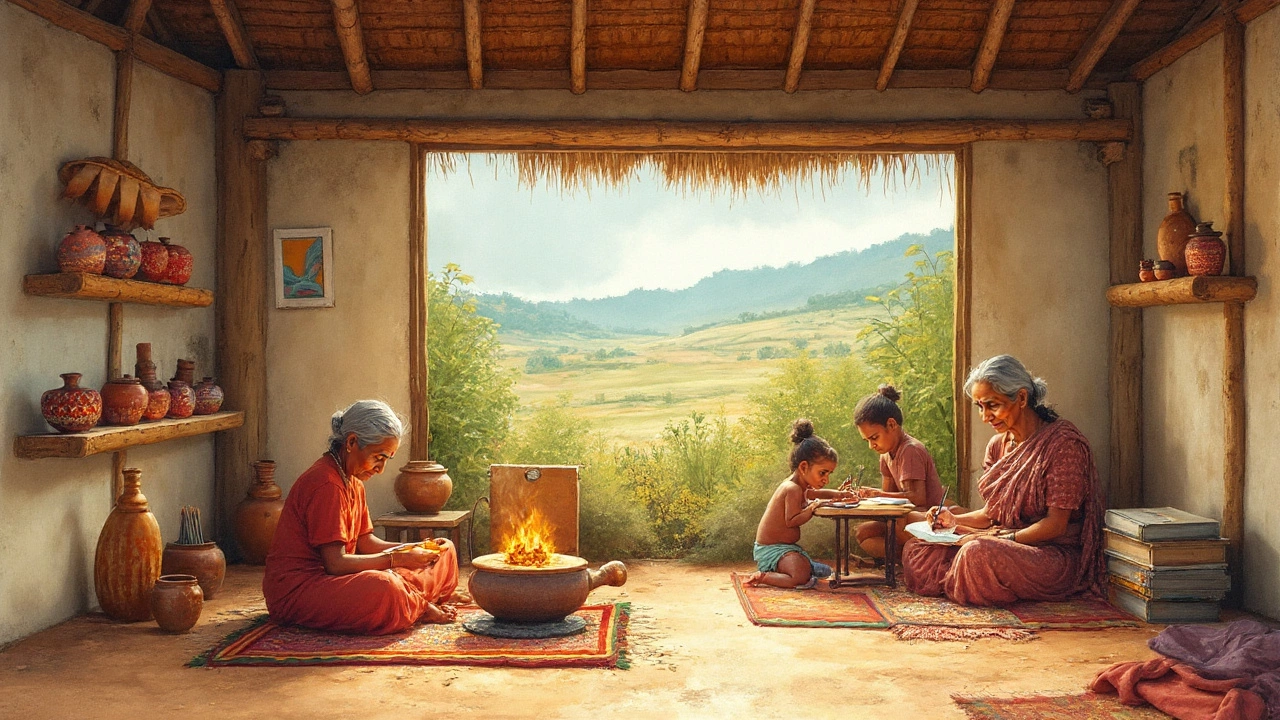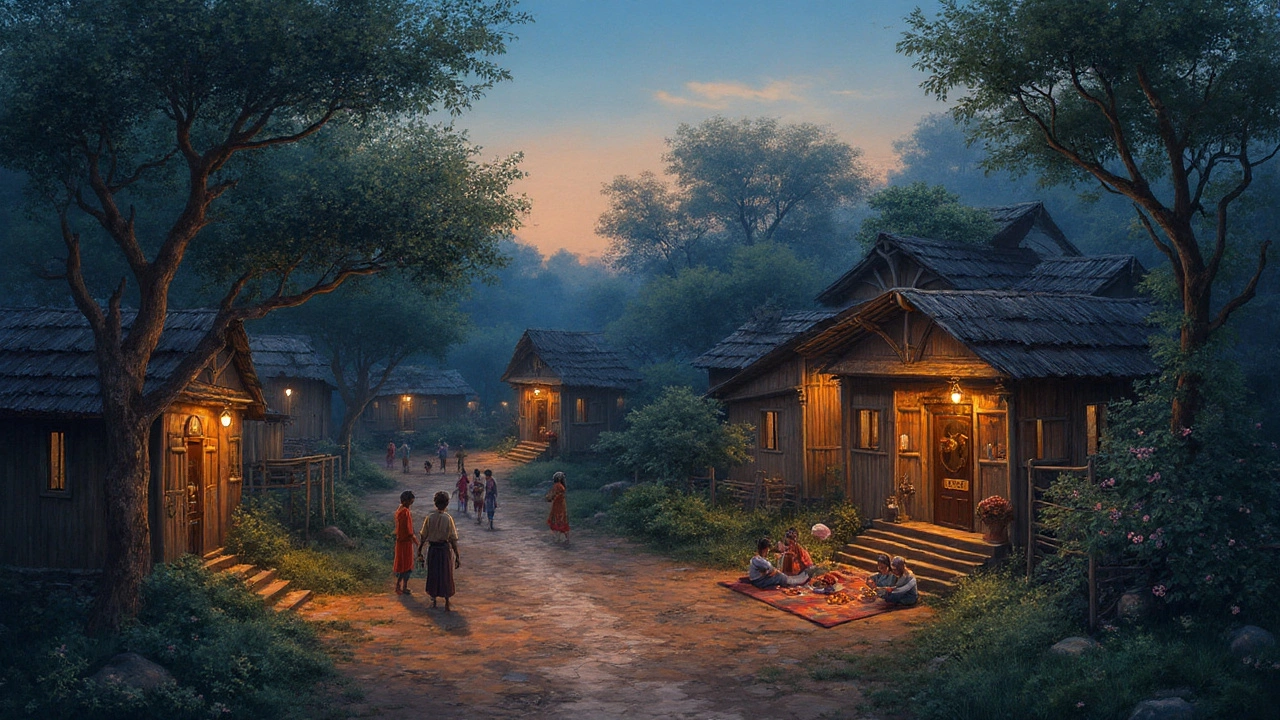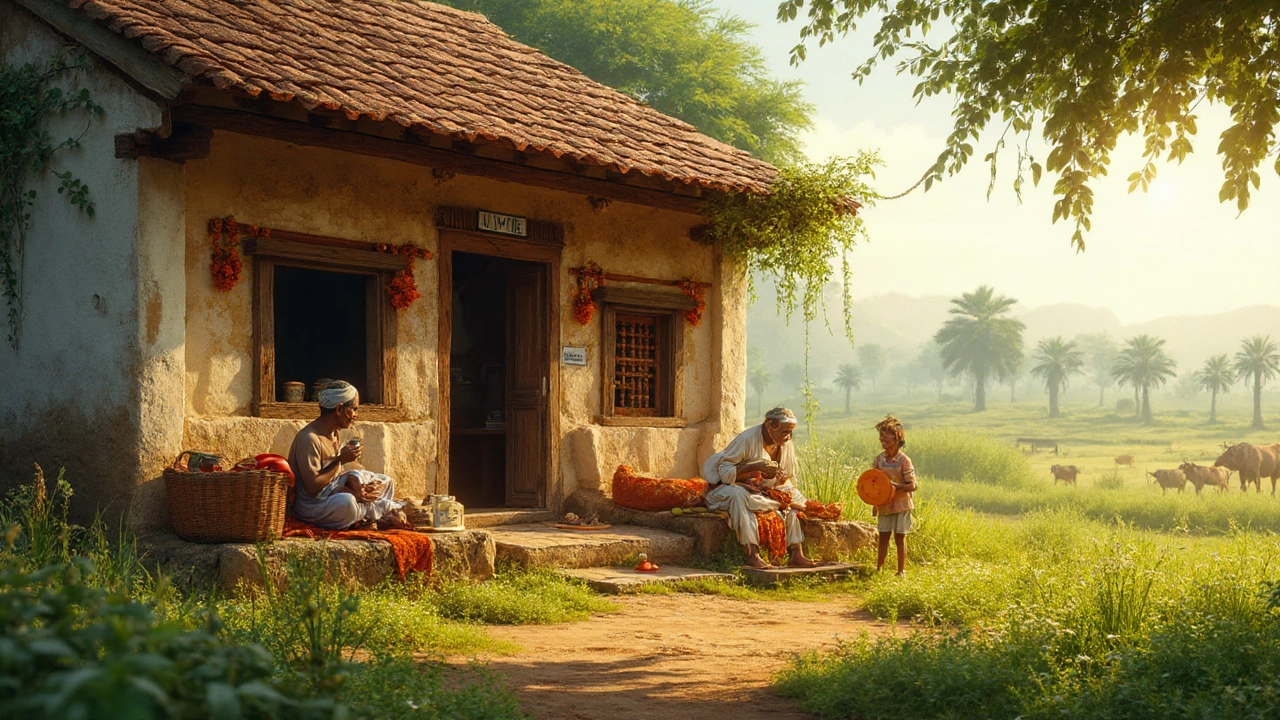It’s wild how many people say they’re “headed to a cottage” without really knowing what that even means. I get it—out in the city, the word feels like some magical portal to peace and green, but once you get your feet in the mud of an actual rural cottage, your whole idea of what “peace” and “escape” means can flip upside down. My son Rowan still talks about our last visit to one: the stubborn front door, the tiny fox we half-spotted through the window, the muggy heat, and Finn, our dog, trying to befriend sheep over garden gates. Rural cottages aren’t about luxury or perfection. If you’ve heard the phrase “back to basics,” it’s not about hardship—it’s about stripping away noise, living slowly, and breathing deep the clean, earthy air of the countryside. There’s far more to these places than just four walls and a wood fire.
What Defines a Rural Cottage?
When most people picture a rural cottage, they think of a small house tucked away in the countryside, maybe with a chimney puffing smoke and a flower-packed garden outside. That’s not far off, honestly, but the heart of a rural cottage is in its connection to the landscape and the traditions of the area. These houses have roots—sometimes literally, as old beams and flagstones look as if they grew out of the ground. Whether you’re in the Cotswolds of England, the Scottish Highlands, or the rolling fields of Normandy, the key trait is authenticity. Forget polished modern décor—a rural cottage is likely to show its age in every floorboard, window latch, and creaky step. That’s not a flaw; it’s character.
Cottages like these didn’t start as getaway homes or vacation rentals. Most were working homes for farmers, weavers, or other rural trades. They’re built from whatever was local and handy: stone, brick, timber, and thatch. Even the layout tells a story. The thick walls keep in heat when winter howls and stay cool when summer bakes the fields. Low-slung beams hint at the past height of rural folk, and small paned windows once made glass more affordable and easier to replace. The truth is, a genuine rural cottage has survived generations, adapting bit by bit to different uses, but always keeping that organic tie to land and village.
Not every “cottage” is rural, though. The real ones come with a setting—fields, woods, quiet lanes, and skies that surprise with how many stars you can see at night. They have a deliberate separation from town life, with an air of self-sufficiency. Water may still come from a spring or an ancient well. You might spot a battered wooden gate short enough for Finn to leap, or stone troughs covered in moss. The best ones allow you to hear the wind move through trees, not just rush by busy roads.
It’s that deep sense of place that sets a rural cottage apart. Sometimes a cottage might feel tiny and cramped after suburban life, especially with energetic kids or pets. But the slow rhythm of the countryside seeps into your bones. You wake to birdsong, eat by the sun’s pattern, and disconnect from the endless noise of always-on screens. People don’t just come to rural cottages for shelter; they come for restoration—maybe unknowingly.
Cottages are not for everyone, and that’s honestly a plus. Some city dwellers are shocked by the absence of flashy convenience. Instead, you might discover the joy of making morning tea on a cold Aga or testing your old scout skills with a smoky log fire. The sense of place becomes personal after a few days. Your walks develop new paths. The oddities and quirks feel more like friends. That’s the real definition of a rural cottage—a retreat that makes you more present.
Classic Features and Architecture of Cottage Living
If you step inside a true rural cottage, you’ll notice some common threads, even if the region or country changes. Start with the walls. Almost always thick, they insulate against both cold winter winds and blazing summer heat. Some English cottages sport rough-cut Cotswold stone, while older Welsh or Irish cottages might show whitewashed walls or weathered slate roofs. Indoors, flagstone floors or ancient floorboards creak under all activity—whether it’s dogs chasing tennis balls or kids racing through with sticky hands.
The windows in these cottages practically beg for flower boxes, but they’re smaller than modern ones. That’s not just about looks; in the days before efficient heating, little windows meant less heat lost. The frames might be hand-forged metal, and the glass wavy and old, with odd little bubbles that cast rainbows when the morning sun hits. Bedrooms tend to be snug, with heavy beams and a sloping ceiling. Rowan always jokes it’s like bunking down inside a storybook.
Look up and the ceiling beams tell their own history: dark with age or limewashed, they support roofs of slate, tile, or thatch. In many classic cottages, there’s one big room downstairs with a fireplace—the literal heart of the home. Open fires both heat the body and draw people together. There’s nothing fancy about the furniture either; battered oak, scratchy wool throws, maybe an armchair that’s seen better days but hugs you just right after a muddy walk. Kitchens are rarely spacious, but they’re practical and charming—with shelves of jam jars, enamel mugs, and a battered table that’s seen more card games and pancake breakfasts than most city kitchens could dream of.
Step outside, and you might find a proper country garden: nothing manicured, more wild beauty than clipped hedges. A kitchen garden or herb patch is common, overflowing in summer with mint and sage, or bulbs poking up in spring. Fruit trees lean against weathered stone, and paths wind their way through grass. Rowan sometimes finds secret corners for building little dens, turning the garden into a new world every visit.
Front doors are almost always solid wood, sometimes with a big iron latch or a noisy knocker. There’s usually a boot room or porch for shedding muddy coats and wellies. Rural cottages aren’t designed for grand entrances; they’re built for people who need practical shelter after work outside. You’ll find stories written into every nook: initials carved above a fireplace, a stone step sunken in the middle from centuries of feet, and maybe an old brass bedframe left by grandparents. Cottages are living proof that houses can become part of a family’s personality.

The Experience: What Draws People to Rural Cottages
So what’s the pull? Why, in the age of slick hotels and vacation apps, would anyone choose a cottage in the middle of nowhere? For some, it’s about nostalgia—growing up with a grandparent’s house in the country, or those summer breaks filled with soundless nights and long, lazy evenings. For others, it’s the opposite of their regular life: a break from noise, rush, and always-on tech. There’s not much that snaps you back to reality quicker than splitting kindling for a fireplace, or scrambling outside in pajamas because Finn’s started barking at shadows under a full moon.
Renting or owning a rural cottage means living at a slower pace. You notice things—frogs along the pond, the bend of an old apple tree, the silence punctuated by owls. Families come here to reconnect, because the distractions fall away. Meals take longer, but the talk lasts even longer. Kids (and even teens) drop their screens to chase butterflies or build makeshift hideouts. Rowan once spent a giddy week constructing Hobbit-like tunnels in an old hedgerow and barely glanced at his phone until we left.
The best rural cottage experiences mix comfort with a little adventure. These aren’t curated spa escapes with infinity pools—they’re warm fires, shared board games, and muddy walks that somehow leave you grinning. Simple pleasures come into focus: the taste of well water, the feel of a handmade quilt, the light through thick glass. Many visitors are surprised at how easily stress fades. I’ve seen friends who can’t sleep in the city nod off in a cottage chair after an afternoon wrapped up in a book and birdsong.
Cottages are also about embracing the quirks. Heating might mean tending an actual fire. Hot water could require a little planning. Sometimes, the Wi-Fi is laughably slow, or there’s none at all. And those imperfections force you to adapt—and possibly, rediscover joys you forgot. Cooking together becomes entertainment rather than a chore. You might learn from local villagers about traditions, crafts, or baking bread that puts any supermarket loaf to shame.
Dog owners like me know cottages are the holy grail for pets—yards to tear around, fields to sniff, and farm dogs to test their bravado. Finn has made more dog buddies in scattered hamlets than any city park. And for adults, especially burned-out city types, the cottage ritual offers something almost medicinal: space to breathe deeply, disconnect from screens, and watch daylight fade into a different kind of quiet.
Tips for Enjoying a Rural Cottage Stay
If it’s your first dive into cottage life, there are a few tricks that can move your stay from mildly charming to unforgettable. First—pack practically. Rural cottages don’t always have modern amenities. Bring layers, raincoats, wool socks, and a good flashlight. Candles and matches sometimes come in handy, especially if the power flickers in a storm (it’s less scary and more magical than you’d think, honest). If you’re traveling with family or pets, double-check that the cottage and garden are secure, especially with sheep or cows in neighboring fields.
Food is crucial. Many cottages are miles from the nearest shop. It helps to bring groceries for your first night—milk, bread, coffee, treats. Once settled in, local markets are goldmines for cheese, eggs, and honey (seriously, cottage-area farms almost always trump big brands). Expect to cook and enjoy local produce—nothing beats a fry-up with eggs collected that morning or berries picked right outside your door.
Be prepared for quirks. Learn how the heating (if not electric) works. Some ovens are charmingly temperamental—don’t plan a soufflé if you’ve got an ancient Aga. Water pressure is sometimes low, and it pays to ask about recycling or composting rules in the area. Respect local customs—a farm track isn’t a car park, and village shops close whenever the owner feels like it.
Plug out from tech if you can. There may be Wi-Fi, but don’t count on streaming three devices at once. Take a few board games or books. Spend evenings outside, weather allowing; August stars in cottage country almost always stun. Rowan and I make a game of spotting bats or trying to identify every night sound. Let kids roam safely—just keep an eye on them if there’s open water or livestock nearby.
Don’t pack your schedule. Much of the value in a rural cottage comes from doing, well, not much. Waking up to cook together, taking long, lazy walks, and letting days follow the sun rather than a rigid calendar. Ask locals for tips—pubs, secret picnic spots, or the best ways to avoid crowds. My best memories are always rooted in simplicity and slow discovery, never in ticking boxes or sightseeing stress.

Why Rural Cottages Keep Their Timeless Charm
Rural cottages endure because they offer what most of us are craving—real rest, real food, honest spaces, and the feeling of being wrapped in nature’s rhythm. Every stay feels like unlocking a little history mixed with daily life. These homes whisper reminders that the good stuff isn’t always shiny or new; sometimes, it’s warm and wonky, and you have to slow down enough to notice. As new waves of travelers seek authenticity over convenience, rural cottages draw us back, offering both adventure and deep comfort. Next time you hear someone mention “cottage country,” know it’s not code for ordinary vacation—it’s an invitation to remember that life can be simple, real, and quietly unforgettable.
